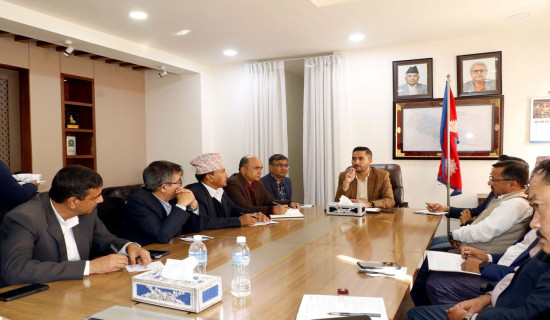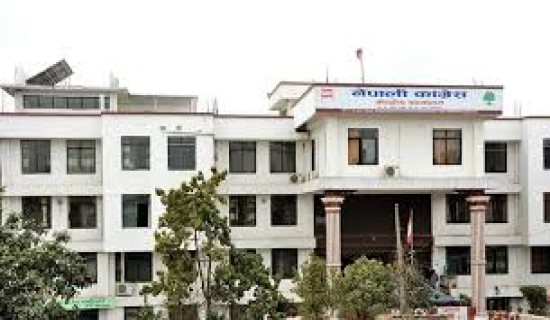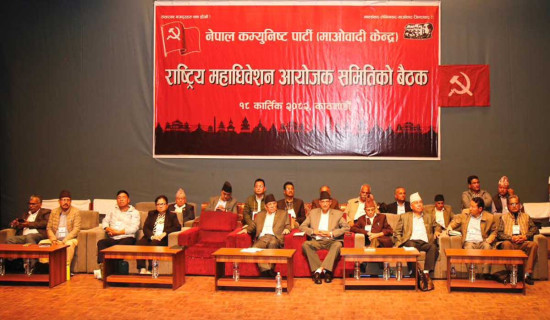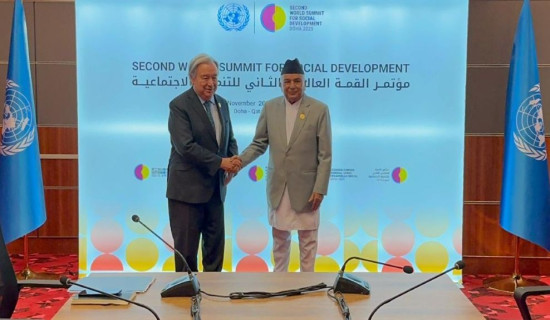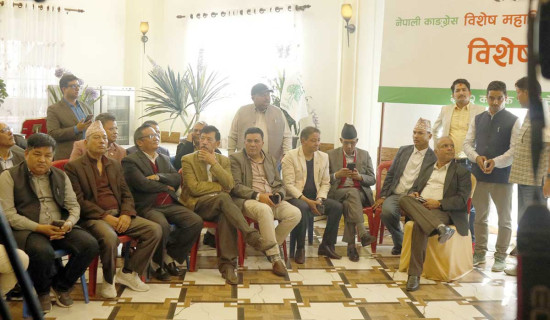- Wednesday, 5 November 2025
Learning From Sri Lankan Crisis
Shyam Prasad Mainali,
The economic crisis in Sri Lanka has deteriorated rapidly. It has triggered an unprecedented outburst of resentment from the public in Colombo. The current government has come under attack for placing the public under severe economic difficulties. With its US$ 81-billion economy, the Island Nation is almost on the verge of collapse.
This stems from the poisonous nationalism and mal-governance led by the country's ruling Rajapaksas for a long. Since gaining independence in 1948, Sri Lanka was expected to be the powerhouse of South Asia due to its strategic location in the Indian Ocean. Singapore, which has physical proximity to Sri Lanka, has made remarkable progress.
Until some years in the past, in South Asia, Sri Lanka had the highest earnings per capita, a good healthcare system and better education facilities with well-organized government machinery. However, Singapore immensely utilized its strategic location for maritime trade whilst Sri Lanka found itself highly engulfed in an ethnic conflict.
Sri Lanka was quick to adopt economic liberalization and experienced rapid economic growth. However, the growth was later hindered by the escalation of war, and economic growth did not reach its full potential. Effective and periodical plans to address issues concerning poverty and social security were slackened and now Sri Lanka is reeling from a severe economic slump.
Factors
Due to poor governance and the misuse of power by the incumbent government, Sri Lanka has plunged into a deep economic and political disaster. The economy has stagnated owing to depletion in foreign currency reserves.
The economic emergency poses significant challenges to Sri Lank’s president Gotabaya Rajapaksa, who had promised he would cut taxes and induce rapid economic growth. At the time of his election campaign, Gotabaya committed to cutting VAT by nearly 50 percent and abolishing other taxes to boost consumption and growth. Consequently, it led to a loss of billions of rupees in revenues.
The COVID-19 pandemic wrought considerable damage to global tourism. As a nation heavily reliant upon tourism, the nation suffered much from the pandemic. Its public debt was already leading to an unsustainable path even before the pandemic. It rose from 94 percent to 119 percent of the total gross domestic product (GDP) in 2019 and 2021, respectively. Currently, it is almost 150 per cent of the GDP.
Since the signing of the BRI agreement in 2014, Chinese debt in Sri Lanka has skyrocketed. Sri Lanka proposed two ambitious projects-- Mattala Rajapaksa International Airport and Hambantota Port, but these projects could not even earn their operating expenses. Eventually, Hambantota Port was handed over to a Chinese company for 99 years. Consequently, Sri Lanka found itself in a debt trap.
A large share of this country is in external bonds, too. Most of these bonds are purchased by Western companies and financial institutions. The share of debt from market borrowing has reached nearly 50 percent of the total debt.
The share of the Asian Development Bank (ADB), Japan, World Bank (WB) and China in debts stands at 13 percent, 10 percent, 9 percent and 10 percent, respectively. As of March 2022, Sri Lanka's total foreign debt amounted to $ 40 billion. The country has declared that it is incapable of paying foreign debt until the current crisis is averted.
Against this backdrop, some comparisons can be drawn between Nepal and Sri Lanka. Nepal is accepting a high-volume debt from foreign countries as well as from multilateral financial institutions. Liberalization, free-market mechanisms and privatization have been accepted since 1991 AD. Sadly, the country has been unable to take adequate benefits from the membership of the World Trade Organisation (WTO).
In Nepal, discussions are focused on the narrative of the Chinese debt trap experienced by Sri Lanka. To some extent, the concern seems genuine, considering that Nepal's current position forces us to study the ongoing Sri Lankan crisis while implementing BRI projects. So, the Government of Nepal needs to think twice before enforcing BRI projects in a full-fledged manner.
We have other reasons to look at where a detailed analysis is essential. We are interested in establishing grandiose infrastructure projects. For this purpose, China is prepared to offer financial investment. Nepal’s economy is based on tourism and remittances and a crisis in either of these sectors would be very harmful to us.
Like Sri Lanka, Nepal is also facing rising foreign debts. Several conditions set in the debts can lead to an economic crisis in the nation where the volume of remittances is decreasing with a widening trade deficit. What is ironic is that, despite being an agricultural nation, Nepal’s agriculture production and productivity have gone down significantly.
Lesson
The latest reports issued by the Nepal Rastra Bank (NRB) show that the country’s economic condition is not so promising. There is a practice of appointing inappropriate persons in public positions. The country must adopt meritocracy while making such appointments. It is also necessary for the government to correct weaknesses seen in policy formulation, decision making and accepting debts. The Sri Lankan crisis can provide us a valuable insight into how a vibrant economy can deteriorate to its lowest level. So, we must learn from Sri Lanka to avert the looming economic crisis.
(Mainali is a former government secretary.)










